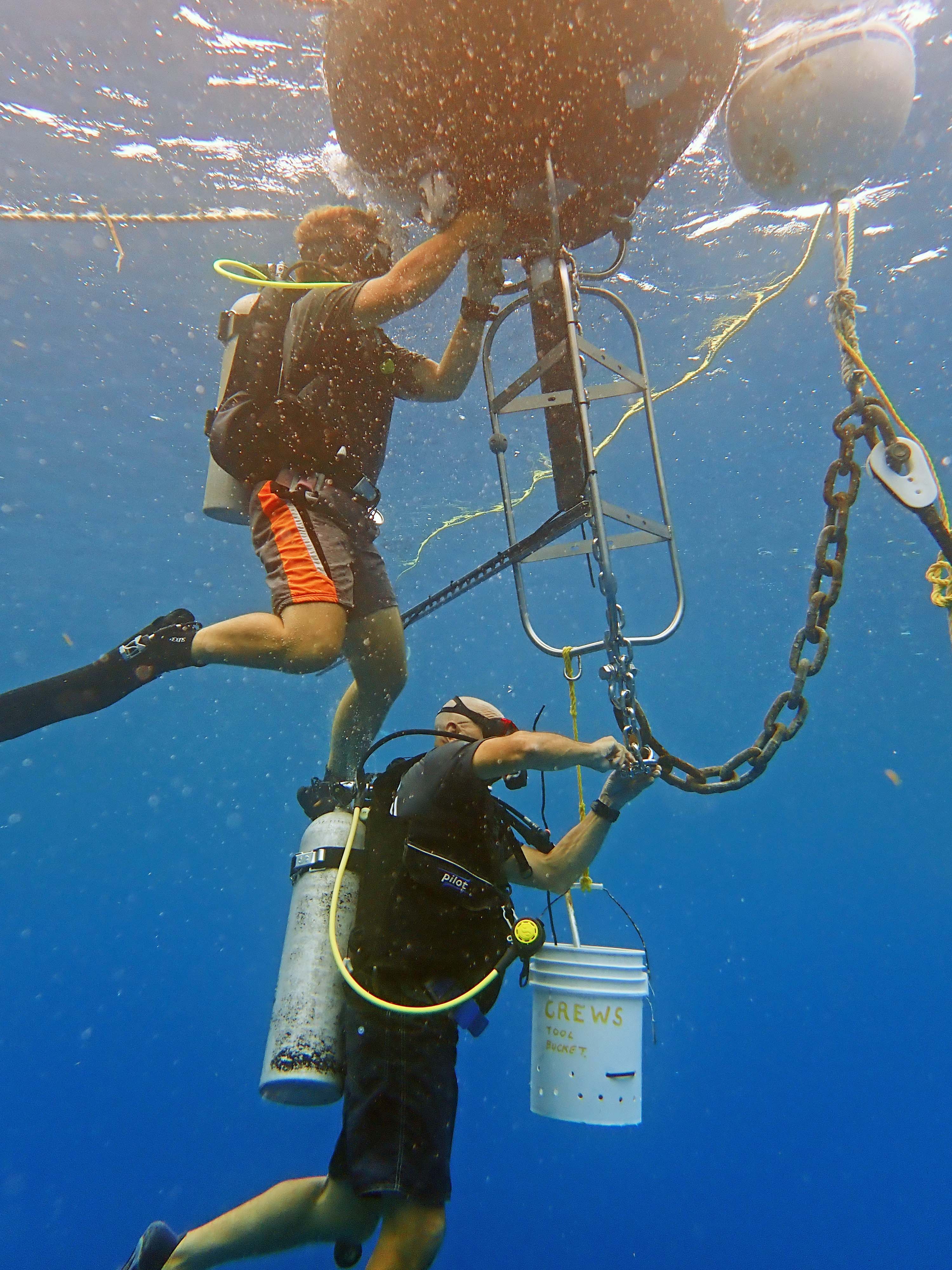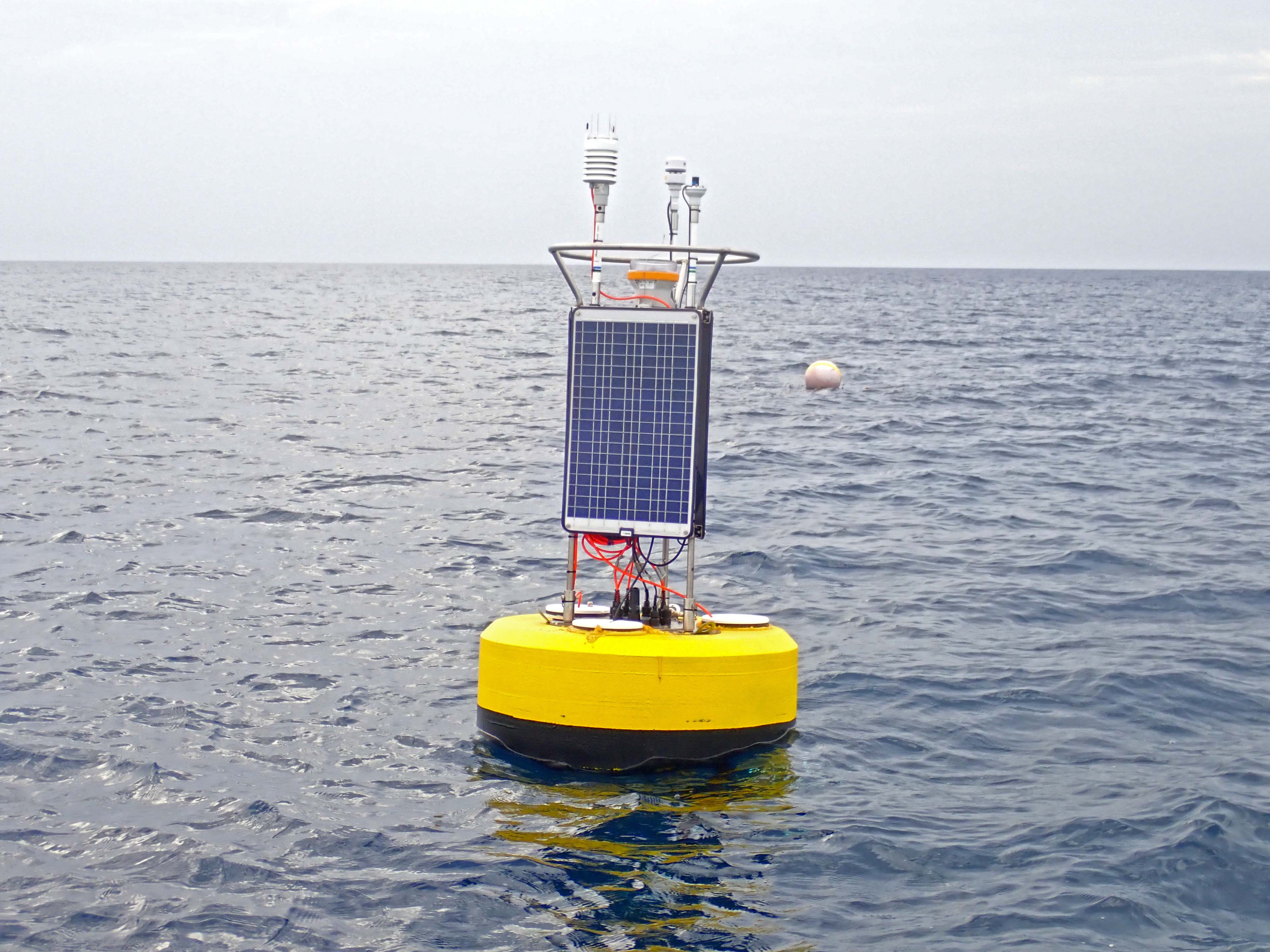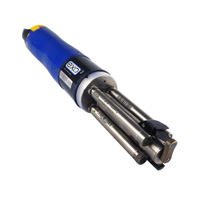 Corals around the world are under threat. The buoys of the Coral Reef Early Warning System (CREWS) help face that threat, providing the entire world with weather patterns and data about climate change from their home in the Caribbean Sea.
Corals around the world are under threat. The buoys of the Coral Reef Early Warning System (CREWS) help face that threat, providing the entire world with weather patterns and data about climate change from their home in the Caribbean Sea.
Since June 2018, a new, state-of-the-art oceanographic buoy has added ocean state and weather data in near real-time to the CREWS system—all accessible from a computer or smartphone.
A better understanding of more threatened regions
Installed by the Central Caribbean Marine Institute (CCMI), which runs the CREWS system, the CCMI team helped describe the challenges the CREWS system needs to tackle.
“CREWS provide a global network of instrument buoys that act in concert to track and understand global oceanic trends,” explains Jon Clamp, CCMI Director of Operations. “These buoys can thereby lead to early warnings of potential destructive trends, allowing managers to develop strategies for mitigation of some of these issues.”
But each aquatic ecosystem is unique, as is each species of coral, and the local challenges threatening reefs. This means to be effective, CREWS needs to detect trends scientists aren’t always even aware of yet and present them to the public.
The team needed to add a new state-of-the-art buoy to help augment the data for analysis. Specifically, scientists needed more detailed data on ocean acidification and the movement of currents in particular locations.
Solution: State-of-the-art buoys
NexSens and the CCMI team collaborated on this challenge and its pain points:
- a huge starting research question
- a need for more kinds of data and more parameters more often
- a need for more ability to study unique local currents
- a need to share all of this data online, quickly

- a need for more people to understand so much data more easily
- the ability to achieve all of this within budget.
The NexSens CB-950 data buoy system was the best solution to this problem. The NexSens CREWS buoys contain a weather station, and instruments to measure dissolved oxygen, pH, conductivity (salinity), PAR (Photosynthetically Active Radiation) above the water and at up to 1-meter depth, and temperature. This allows the CCMI team to track changes in ocean acidification, a serious threat to corals.
The new CREWS buoy also includes an Acoustic Doppler Current Profiler (ADCP) which measures the movement of the ocean water beneath the buoy to 50 feet, about every 4 feet. This allows the team to study the complexity of the water’s movement in detail—because currents on the surface may not reflect currents at depth.
Benefits: More data, parameters, and users—more often
The sophisticated instrumentation package on the new buoy tracks rising temperatures linked to coral bleaching and changes in ocean chemistry that affect photosynthesis, acidification, and other environmental concerns. More current data helps the team understand how corals and other species interact, both inside and outside of marine protected areas.
“Understanding the physical motion of water using an ADCP will help build models of localized water movement, eventually identifying potential sites for coral recruitment,” states Clamp. “This can lead to reef managers designating protected areas that may not have been understood prior to this technology, and can also apply to many other broadcast spawning species.”
In fact, thanks to the interlinked cellphone app, a smartphone is all anyone needs to get conditions and data from the system.
Result: Easier trend tracking, deeper understanding
The new buoy has a significantly smaller physical footprint, so it is easier to maintain, deploy and retrieve. It is, therefore, less costly and easier to handle—and so is its data.
“Data is collected and displayed using updated real-time technology via smartphone, which is more responsive and user-friendly,” confirms Clamp. “Previously, the data was unwieldy, this would have been acres of Excel spreadsheets. With the new system, we can present data in graphic ways that are easy to understand and relevant to a broader scientific and lay community.”
This cutting edge data and technology presentation offers a faster path for environmental resource managers, governmental departments, and stakeholders to adapt to the changing needs of the local environment.
“This equipment can help understand the many different parameters that stress coral species,” concludes Clamp. “The data has led to experimenting with how some corals survive in differing conditions, and we are spearheading projects involving multiple species. Ultimately, CREWS allows scientists to ask more in-depth questions due to the refinement of specific data.”
Your instruments are only as useful as the questions they can help you answer—now and in the future. NexSens equipment is designed and constructed with your research in mind, and every project is unique.
Equipment
The NexSens CB-950 Data Buoy is designed for deployment in lakes, rivers, coastal waters, harbors, estuaries and other freshwater or marine environments.
The Vaisala WXT536 Multi-Parameter Weather Sensor simultaneously measures air temperature, humidity, pressure, rainfall and wind in a compact platform with optional heating.
EXO3 is a purpose-built sonde for monitoring major water quality parameters, including: pH, conductivity, temperature, turbidity and dissolved oxygen.
The LI-COR LI-193 Underwater Spherical Quantum sensor accurately gives an added dimension to underwater PAR measurements.
The LI-190R Quantum Sensor measures photosynthetically active radiation (PAR), which is energy that drives photosynthetic reactions in plants.
The Airmar 200XW-IPX7 is a more robust weather sensor option to meet the operational challenges of harsh open water environments.







